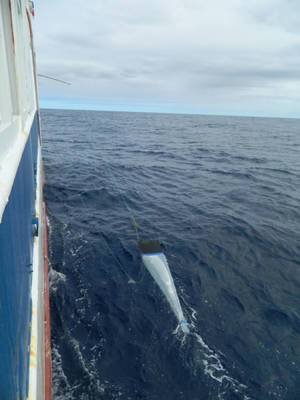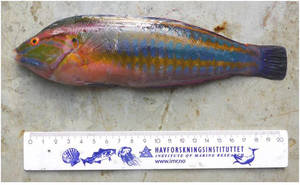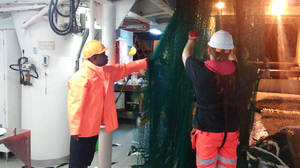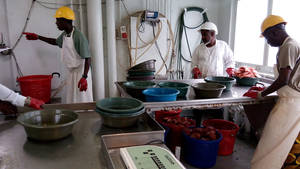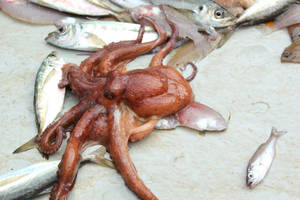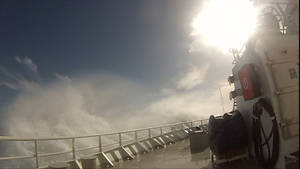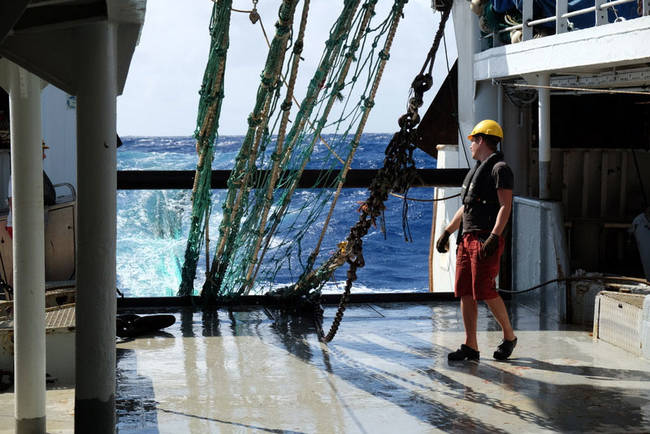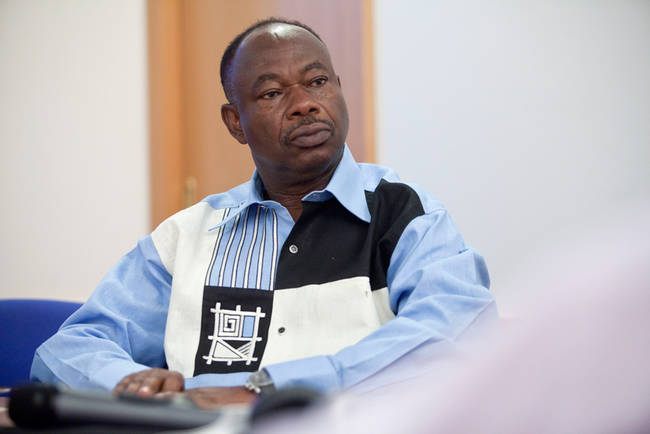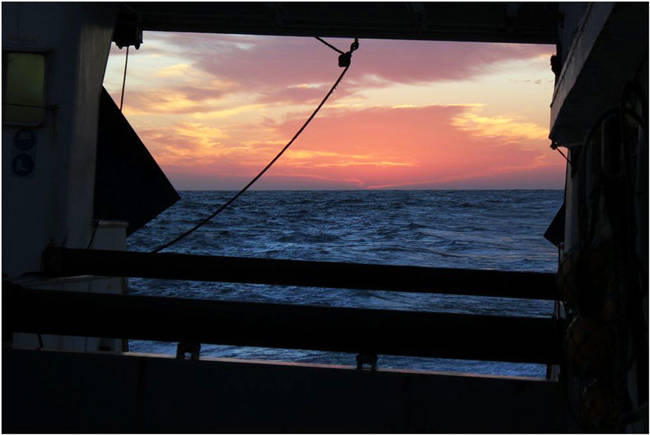How does the Nansen project develop its survey voyages?
The numbers speak for themselves.
Since the Nansen Programme began in 1974, the successive research vessels bearing the name Dr Fridtjof Nansen have made numerous survey voyages around the world – having sailed the staggering equivalent of over 60 times around the globe.
While most of those voyages have been in African waters, there have also been numerous survey voyages to Asia, including one across the southern Indian Ocean in 2015 and another on southern Indian Ocean seamounts in 2010.
These survey voyages require meticulous planning and organization with the countries that will be involved in the surveys and will be the direct beneficiaries of the data and information collected.
To learn more about this process, we spoke with FAO’s EAF-Nansen Project Coordinator, Kwame Koranteng.
Before joining the Nansen team, Mr. Koranteng had a long experience in fisheries research and management, in conservation and provision of scientific advice to local communities, governments and non-governmental organizations.
As we discussed in a recent post about direct experience working aboard the Nansen in our interview with FAO Fisheries and Aquaculture Policy and Resources Division Director Manuel Barange, Mr. Koranteng also brought to his position as Project Coordinator significant personal experience as a scientist who had worked aboard the Nansen vessel.
As we lead up to the launch of the brand new Nansen vessel on 24 March in Oslo, Norway, Mr Koranteng shared some of his thoughts with us and explained how survey voyages are organized.
You knew the Nansen vessel extremely well before becoming the Coordinator of the EAF-Nansen Project. When did you first become involved with the Nansen vessel as a scientist, and how many survey voyages have you been on?
I got to know about the Dr Fridtjof Nansen in 1981 when the vessel carried out its first survey in Ghanaian waters. I did not join the cruise because I was then working on demersal fish stocks and the survey was on pelagic fish stocks. My first stay on the vessel was in 1999 when I served as the local cruise Leader in a combined demersal and acoustic survey of the resources of the western Gulf of Guinea (Côte, d’Ivoire, Ghana, Togo and Benin). I have been on three similar cruises since, always as the local Cruise Leader.
What are some of your favourite memories aboard the Nansen? What are some of the key experiences you took from your time and work aboard?
The Marine Fisheries Research Division of Ghana, where I worked, owned research vessels, the latest of which was a 29-metre multi-purpose vessel. Working on such a vessel is not easy. Stepping onto Nansen was like living and working in a 5-star hotel. Compared to the research vessels that our institute had, Nansen was stable, comfortable and work-friendly with all the modern instruments within reach. The food is usually good although many local participants have problems with it after a few days at sea. Leaving the vessel at the end of a survey with a draft copy of the survey report was quite experiential as we always had something to report on back at the institute.
The Nansen has seen an amazing amount of survey voyages over its long history. How does the project determine which survey voyages should be undertaken? How does the planning process work and how do you work together with countries and their research intuitions in the planning stage?
The main objective of the Dr Fridtjof Nansen surveys is to provide support to beneficiary countries in obtaining relevant information on their fishery resources. Countries and partner projects that require the use of the vessel in any particular year send expression of interest to the Project Coordination Unit at FAO in the last quarter of the preceding year. The requests are examined and a cruise plan prepared with assistance of the Survey Coordinator based at the Institute of Marine Research (IMR) in Bergen and the Vessel Department of the IMR. We avoid areas where maritime security is a problem.
Before the start of any survey, a pre-survey meeting is held with the cruise participants and other scientists of the partner institution to agree on the survey objectives, expected outputs, and the survey design, including the cruise track to follow. This information is put together in a document called “Sailing Orders” that also indicates the role of each scientist or technician on the cruise.
Where necessary, especially when many of the cruise participants are young scientists and technicians, we organise a crash course on survey design, sampling methods and data analysis. This is to ensure that each participant will play an active role on the vessel and will also benefit from the survey, professionally.
We just began blogging about the survey voyages, and you always seem to have enthusiastic teams. How do you select the scientists for each survey voyage? How do you ensure a mix of skills and expertise?
When we have a national survey (e.g. working in the waters on one country), the participants are usually selected by the head of the national institution that partners with us. We give some guidance on the skills required for the particular survey. We then discuss the crew list with the scientist who has been nominated by the partner institution as the local Cruise Leader to satisfy ourselves that we have the right mix of persons. When we have a multi-national survey, for example the one that was carried out across the southern Indian Ocean in 2015, we request the various countries and partner projects to propose participants. In the special case of the Indian Ocean survey, we requested the office of the IOC/UNESCO Sub-Commission for Africa and the Adjacent Island States (IOC-AFRICA) and the secretariat of the Global Ocean Observing System Africa Coordinating Committee, to help us identify the participants.
We usually encourage participation of female scientists and technicians.
What type of feedback do you hear from the scientists and government officials following survey voyages?
We organize a post-survey meeting at the end of most surveys to finalise the survey report and to inform stakeholders about the findings. Many of the post-survey meetings have been attended by ministers responsible for fisheries.
We have always received very positive comments about the surveys and very often also receive requests for training of local scientists. These request are considered and they inform the training courses that the EAF-Nansen Project organizes.
In the last three years, for example, we have organized training courses on research vessel surveys (trawling and acoustics) and on taxonomy and fish species identification. These courses result in improved skills, both for work on Nansen and also on local research vessels and fisheries work generally.
The new Nansen vessel is about to officially launch following a ceremony in Oslo. What plans do you have in place for the new vessel?
Technically the vessel was launched last year at the shipyard in Spain where it was built. The event in Oslo is to formally give a name to the vessel and to commission it for active work within the EAF-Nansen Programme and in line with Norwegian development cooperation in fisheries.
We have changed the modus operandi of the work a little bit. This time, the vessel will be used to implement the Science Plan of the EAF-Nansen Programme in which a number of research areas have been identified with clear research objectives.
From May this year (2017) till the end of the year, the vessel will be involved in a large-scale survey of pelagic resources in the Atlantic coast of Africa, from Morocco to South Africa. The countries have been officially informed and requests for permission being made. Scientists from many of the countries in the region have been involved in consultations on the design of the science plan and the associated surveys. The vessel will move to the Indian Ocean in 2018, working off eastern Africa and some parts of Southeast Asia.
Thank you to Kwame Koranteng , FAO’s EAF-Nansen Project Coordinator, for providing us with this thorough overview of the Nansen programme, with a special view to how survey cruises are set up with participating countries and their ministries and research institutions.
As you can see, 2017 is shaping up to be an exciting year for the new vessel, and we look forward to bringing you – virtually – on board with us as we set sail in our survey voyages along the Atlantic coast of Africa. Be certain to join us on the #EAFNansen blog to follow us on our scientific adventures.
As always, we’ll have an enthusiastic and international team of scientists on board eager to share their work with us, and to answer any questions posed by readers, particularly our student readers who may be dreaming of a career in marine science and perhaps a voyage on the Nansen one day!
And be sure to follow our Twitter coverage of the Nansen naming ceremony on 24 March – live from Oslo!



